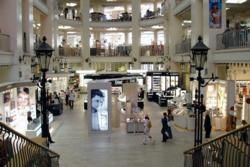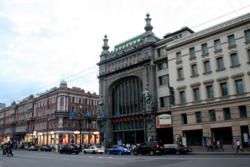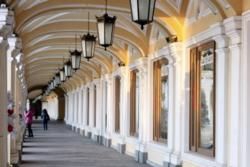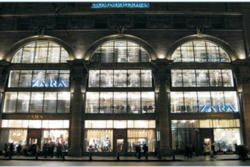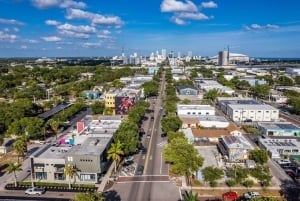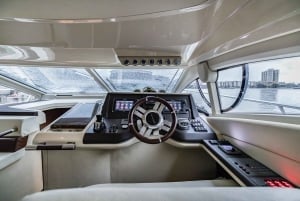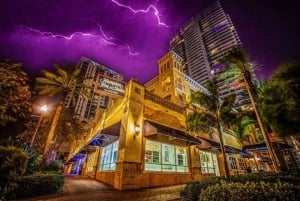Shopping
Introduction
Not so long ago, the idea of coming to Russia to go shopping would have seemed outlandish. Fortunately, the days when the Soviets ran a dual economic system of roubles-only shops for locals which contained very few goods of poor quality and subject to rationing, combined with foreign-currency only shops (under the brand Beryozka, meaning birch-tree) selling overpriced souvenirs and 'luxuries' such as fizzy drinks and chocolate often unavailable elsewhere, are long gone. You may still come across the old system of collecting a ticket for your goods at one cash desk, taking this to another to pay for the goods, then returning to the original desk with your receipt to collect the goods, but fortunately this system is now quite rare.
Today the first-time visitor is likely to be amazed not so much by the lack of variety as by the ubiquitousness of foreign brands and shops from the high street back home, sometimes but not always translated into Russian or just written in Cyrillic letters. You can find pretty much anything you may need to buy in the center of the city, and there are also enormous edge-of-town commercial developments, Mega Dybenko and Mega Parnas which can be reached by metro and marshrutka or bus.
The in-town malls tend to share a similar lay-out, with a supermaket on the basement level and often quite fashionable or exclusive restaurants on the top floor. Some (such as Gallereya on Ligovskiy prospekt and Pik at Sennaya ploschad) also have cinema, bowling and other entertainments. All the main shopping centers are mapped below. More information on what kind of souvenirs to buy can be found here. However the city was also the capital of an empire, and to this day contains some wonderful historic commercial buildings used for shopping before the 1917 Revolution.
Gostinny dvor
St Petersburg's oldest shopping center, and certainly one of the most interesting, is Gostinny dvor, located on Nevsky prospekt in the heart of the city. (There are actually a couple more in the center too, but these are run-down). The name literally means a merchants' yard, as this was where merchants would come to trade, setting up shop and staying until they had sold all their goods. You will find similar buildings in small provincial towns across Russia, but none on this scale - the building occupies an entire, irregular city block, and has a perimeter of almost 1km. The first building on this site was wooden, the current Classical style, two-storey, arcaded brick building was designed and built in the 1760s-1780s after a fire destroyed the original. One of the reasons the place became so popular was in part because goods were sold for the first time at fixed prices, which was supposedly the European way of doing business, rather than subject to extensive bargaining which had previously been widespread. Today the building contains hundreds of small merchants selling a real mix of goods, from luxury to household, fashion to technology, cheap Chinese imports and hand-crafted local souvenirs. There are two entrances to the Gostinny dvor metro station here too, and the wide pavement outside is always full of people waiting, chatting, meeting, selling things or protesting, and in the run up to New Year it contains one of the city's largest yolkas, or christmas trees. Older Petersburg residents recount how, following severe damage suffered during the Blockade, reconstruction workers discovered eight heavy bricks under the floors of Gostinny dvor. Closer inspection revealed that they were in fact ingots of pure gold, a total of 128 kilos, which had been hidden there by the owners of the jeweller's shop which had occupied the premises in pre-Revolutionary days, and presumably left behind during the chaos of Revolution. What became of the gold bars, however, remains unknown.
Passazh
Almost opposite Gostinny dvor on Nevsky prospekt is another stylish and historical shopping centre, Passazh. Opened in 1848, it was described at the time as a French novelty, consisting of three storeys and covered by an enormous glass canopy. At almost 200 meters in length and running between Nevsky prospekt to the front and Italyanskaya ulitsa to the rear, it was larger than many similar arcades in London or Paris. It was renovated in 1901 when it acquired an new entrance portico, lift and electricity. In its heydey a small palm-court style orchestra would play for shoppers, and there were other attractions such as a gypsy choir, wax figures and a mechanical theater. To this day the building contains a theater, the Komissarzhevskaya Drama Theater, named after the renowned actress Vera Komissarzhevskaya who portrayed lead ladies in many of Chekhov and Gorky's plays.
Yeliseyev Merchants
A couple of hundred meters further along Nevsky prospekt from Passazh at number 56 is Yeliseyevs', a wonderful style-moderne (Russian art nouveau) building consisting of enormous steel-framed stained glass windows, and huge statues representing industry, trade, art and science. Opened a few years before the 1917 Revolution, the ground floor was a cross between Fortnum and Mason and Harrod's food court, and continued to operate for senior party functionaries only even during the Soviet period, under the utilitarian sounding name Gastronom No.1. The second floor contains the Akimov Comedy Theatre.
Dom Mertensa
Back down Nevsky prospekt towards the Admiralty, at number 21 you will find an imposing building with three huge plate-glass windows. The buidling was constructed in 1911-1912 in style-moderne (Russian art nouveau) and neo-classical styles for the Mertens fur traders and still bears the original name, Dom Mertensa, on the front of the building at the top. During the Soviet period the shop was known as the House of Fashion, today Spanish chain Zara occupies it.
Dom knigi
Dom Knigi, or House of Books, located at number 28 Nevsky prospekt opposite Kazanskiy sobor, is another exemplar of style moderne, completed in 1907 for the Singer Sewing Machine Company. Its cast iron frame made possible the large ground floor windows so passers-by could take a look at the women sewing inside. The building is crowned with a dome and tilted glass sphere, illuminated at night and held up by statues of a man and a woman. Originally designed as an 11-storey building, the architects were unable to get the design passed by local planners in accordance with Tsar Nicholas I's proclamation that all buildings in the city should be at least two metres lower than the Winter Palace. The building was recently renovated, so look out for the Italian marble staircase, golden walls, oak frames and doors and mosaic tiled floor. Today the building contains the city's most extensive bookshop, as well as a wonderful (if pricey) cafe on the first floor which looks directly onto the cathedral opposite.
DLT
Just off Nevsky prospekt, Bolshaya Konyushennaya ulitsa is fast gaining a reputation for high quality shopping, with boutiques, galleries and quality merchandising especially in the end towards the Tsar's former stables. DLT, (the catchily named House of Leningrad Trade), located at number 21-23, was originally opened in 1908 and became one of the city's largest shopping centers in Soviet times. The building is currently under reconstruction. Moscow's exclusive TsUM department store is due to open a branch there at some point in the spring/summer of 2012, which is likely to lend the area even greater exclusivity.



